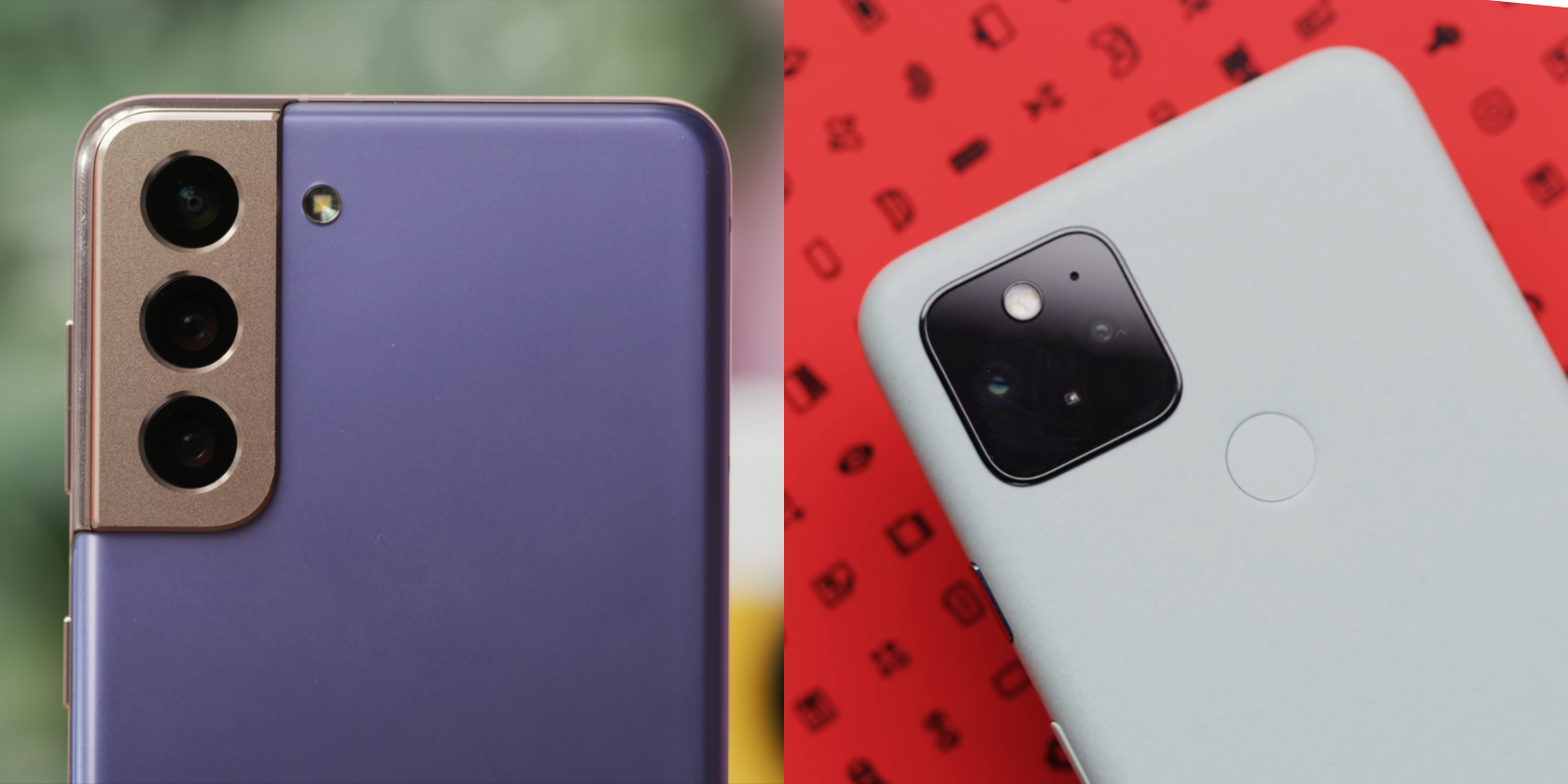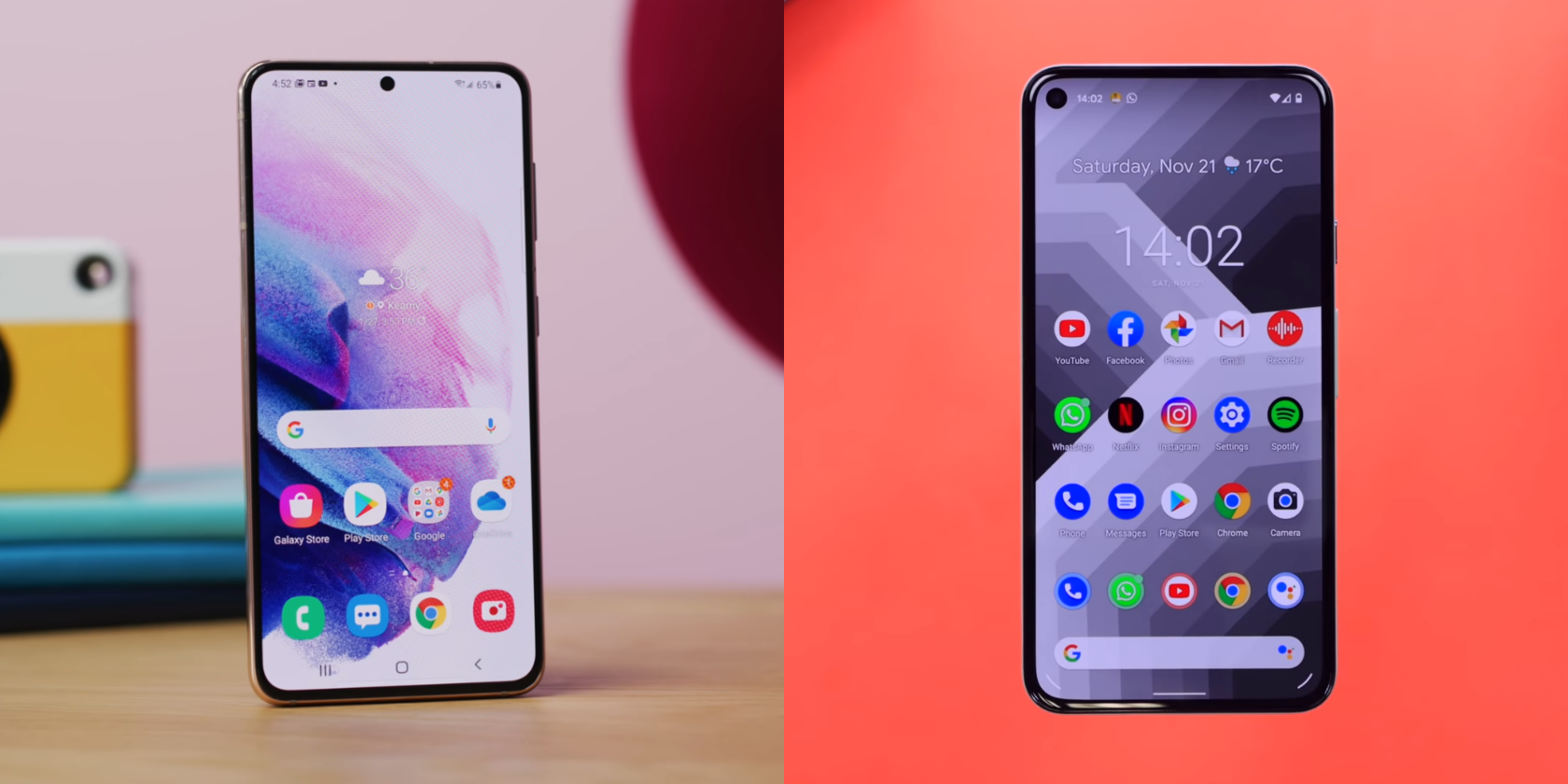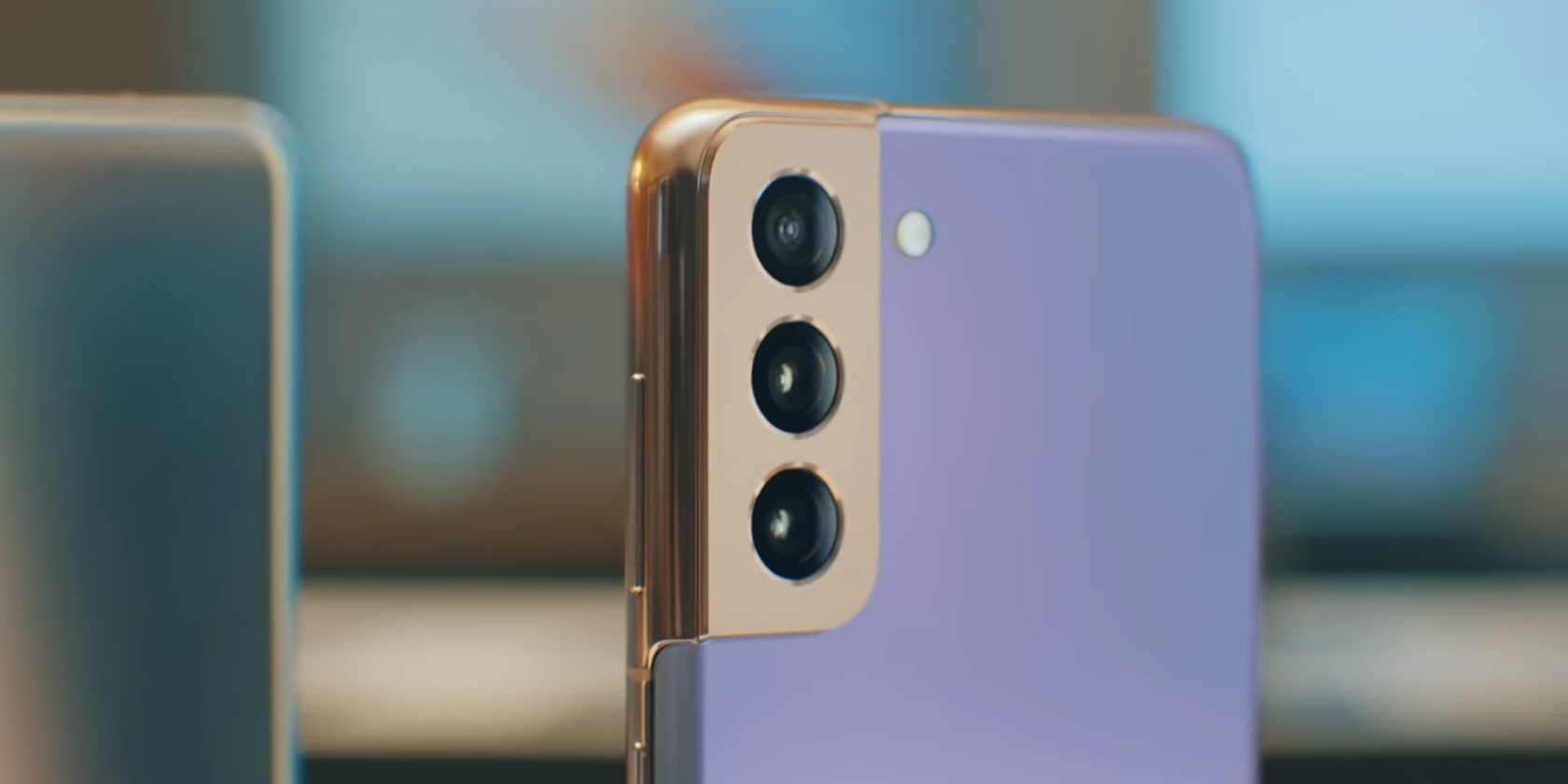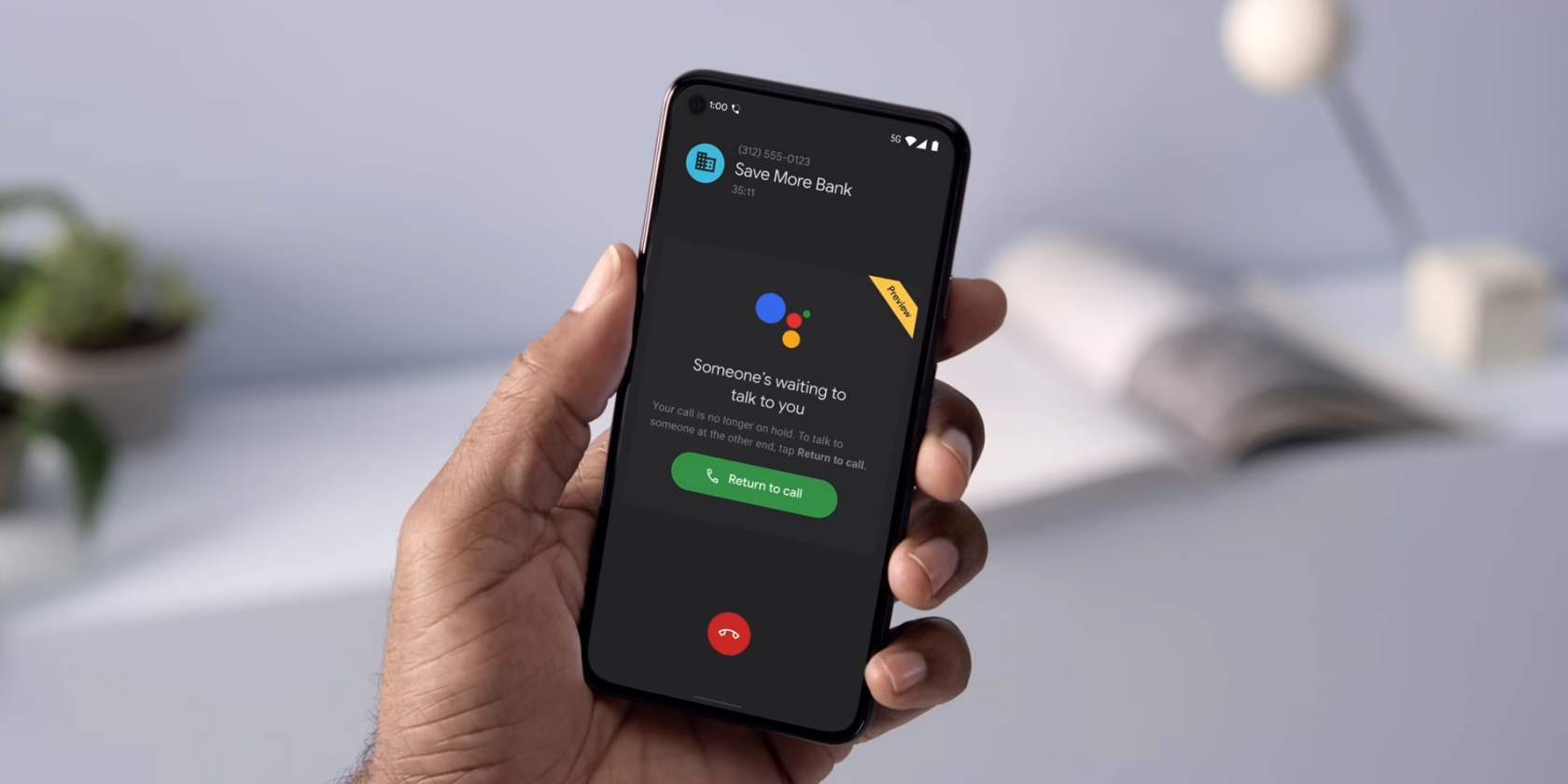Buying a phone today is often an exhausting task. There are so many aspects to consider, priorities to manage, and features to look into that suit your specific needs. To help you decide between two popular devices, we're going to compare the Samsung Galaxy S21 and the Google Pixel 5.
Google launched the Pixel 5 in October 2020, for $699. Not long after, Samsung launched the Galaxy S21 in January 2021, starting at $799. Both devices have had their fair share of the limelight, but which one should you buy? Let's find out.
1. Camera: 8K vs. 4K
Thanks to its strong software optimization, the Pixel lineup has always enjoyed praise for its camera. But Samsung is catching up, and fast. What the Pixel 5 wins with its crisp, well-contrasted, and high dynamic range photos and super-steady video, it loses with its unimproved image processing. This is a problem similar to Pixel 4a.
Spec-wise, the Galaxy S21 comes with 3 rear cameras: 64MP telephoto, 12MP wide, and 12MP ultrawide. It can take up to 8K video. The Pixel 5 falls behind slightly with its two rear cameras: 12MP wide and 16MP ultrawide, with 4K video support.
Both devices have a punch-hole front camera design, but the S21 is a clear winner there with its 4K-compatible 10MP camera. The Pixel lags behind with its 1080p-compatible 8MP camera. But the camera experience isn't just about the highest specs. Let's talk quality.
For a lot of people, the Pixel 5 would be a clear choice for its punchy colors, DSLR-like bokeh effect, and powerful Night Sight mode for low-light photography. What the Pixel 5 lacks in numbers, it makes up for in computational photography and image consistency. The Galaxy S21 fumbles a bit with image processing, but outshines when it comes to detail in videos and fun camera features like Director's View and Single Take.
2. Performance: Snapdragon 888 vs. 765G
Both the Pixel 5 and the Galaxy S21 come with 8GB of RAM and Android 11 out the box. On the Pixel 5, you get a clean, minimalist, no-bloatware stock Android experience. The Galaxy S21, on the other hand, rocks the One UI 3.1 skin on top of Android 11.
If you're a gamer and all you care about is your games running smoothly, the Galaxy S21 performs miles ahead of the Pixel 5.
Samsung's device is equipped with the latest Snapdragon 888 or Samsung's native Exynos 2100 chip (depending on where you live). Meanwhile, Google's phone uses the older Snapdragon 765G chip.
To give you a little perspective on what that means in general use, the AnTuTu score (a well-known hardware test) for the Galaxy S21 clocks somewhere around 642,745, while the Pixel 5 scores only around 318,155. This means that in theory, the Galaxy is roughly twice as fast as the Pixel.
For normal everyday use, though, both phones get the job done quite well. Although it's worth noting that the Pixel 5 only offers a 128GB of storage capacity model, while the Galaxy S21 comes with a 128GB as well as a 256GB variant.
For most people, 128GB should be enough space. But for gamers and photographers, 256GB might be a safer choice to avoid overstuffing your device.
3. Display: AMOLED 2X vs. OLED
Samsung has built a reputation for having the best smartphone displays in the industry. The Galaxy S21 continues this trend with its dynamic AMOLED 2X panel while the Pixel 5 rocks an OLED display. Although both panels support HDR10+ content, the S21's screen has better colors, deeper blacks, and is battery-efficient. Hence, using dark mode can help save battery life.
The Galaxy S21 is a bigger device and thus has a bigger screen that measures 6.2 inches. The Pixel, although smaller, feels more comfortable to hold in hand at 6 inches. Samsung dropped the support for 4K resolution and cut it down to FHD+, providing 1080x2400 pixels for the Galaxy S21. This meets the Pixel 5's 1080x2340 pixels.
Perhaps the biggest difference in display between these devices is the refresh rate. The Pixel 5 is limited to a 90Hz panel while the Galaxy S21 leaps ahead at 120Hz. This means smoother scrolling, swiping, switching between apps, and a much better gaming experience.
4. Battery: 25W vs. 18W
Both devices pack a decent 4000mAh battery, with the Pixel 5 nudging a tiny bit more at 4080mAh. The Pixel 5 supports up to 18W charging and can hit 41 percent charge, from empty, in about 30 minutes. The Galaxy S21 supports up to 25W charging and can hit 55 percent in the same duration, starting from empty.
Both devices can easily last a day, and even extend up to two days with their adaptive battery features that learn your usage patterns and optimize apps accordingly. But extensive gaming turns the dial a little towards the Galaxy S21, thanks to its better chip and GPU optimization.
Keep in mind that the Galaxy S21 does not come with a charger in the box. You can either use your own charger or buy a new one separately from Samsung. Both devices can charge wirelessly at 10W, plus they support charging other compatible accessories and devices via reverse wireless charging.
The Pixel 5's Battery Share supports 5W, while the Galaxy S21's PowerShare supports 4.5W reverse wireless charging.
5. Build Quality: Ultrasonic vs. Capacitive
The Pixel 5 is made of an aluminum body with Gorilla Glass 6 protection on the front. The Galaxy S21 competes with its plastic and aluminum body, featuring Gorilla Glass Victus. Both phones have an IP68 certification for water and dust resistance. The Galaxy S21 also features an under-display ultrasonic fingerprint sensor. The Pixel 5 takes a more conventional route with its capacitive fingerprint sensor.
While the Pixel 5 is easier to hold, it has a bigger punch-hole cutout that covers more of the screen real estate than the Galaxy S21's thinner cutout. Both devices lack a microSD slot and a 3.5mm headphone jack. For people who like trendy colors, the Galaxy S21 is the one to pick, as its four color options beat the Pixel 5's limited two.
But for the people who prefer a more stealthy look, the Pixel 5 is not a bad choice, with its clean matte finish and no camera bump. The Galaxy S21 has a matte frosty finish to resist fingerprints, along with a very noticeable bump thanks to the S21 lineup's new contour-cut camera design.
6. A Personal Take
A lot of what made the Pixel phones great is removed from the Pixel 5. The squeeze feature to trigger Google Assistant, telephoto lens, and the great haptics on previous devices are all gone with this model. What's left is a vanilla Google experience that feels bland in comparison to the previous Pixel devices.
The Galaxy S21 may feel like a better choice after reading that, but there's still a lot left to consider. Samsung is notorious for stuffing its phones with unwanted bloatware that eats through storage space, not to mention how the Galaxy S21 doesn't have S Pen support. Plus, a plastic body and no charger in the box might be a deal-breaker for a lot of people, especially for the price.
But Samsung tries to make up for these cons by coming up with new features for its users to play around with. For instance, Video call effects allow you to create all those fancy background effects you see in Zoom meetings. You can also enable lock screen widgets like music, weather, and news after turning on Always On Display.
The Better Bang for Your Buck
The Samsung Galaxy S21 and the Google Pixel 5 are both great phones. But while the Pixel 5 seems aimed at a small targeted minority, the Galaxy S21 is a more well-rounded package. Thanks to some smart compromises to cut down on price, the Galaxy S21 is $200 cheaper than last year's model.
For Android purists, Google's Pixel 5 is tough to pass up. But for the average consumer, many will find it terribly overpriced and see the Galaxy S21 as a better value.




